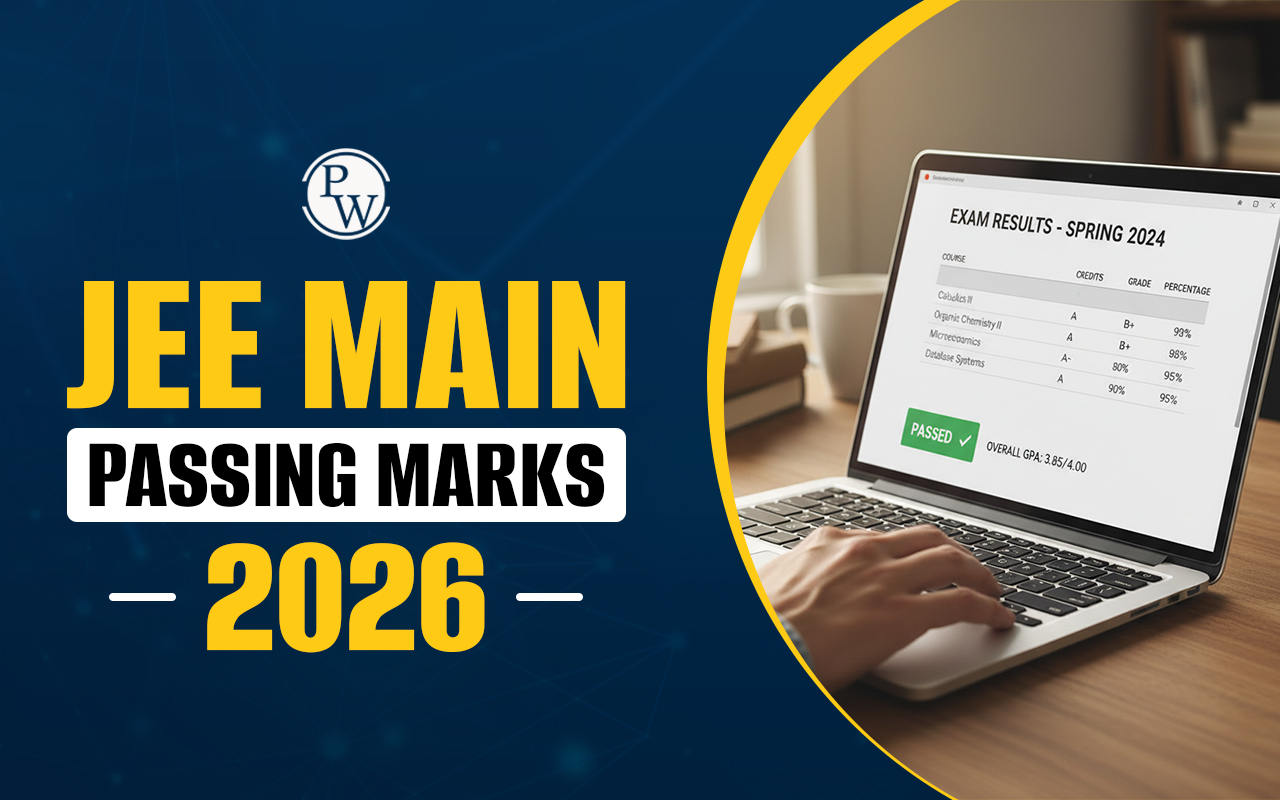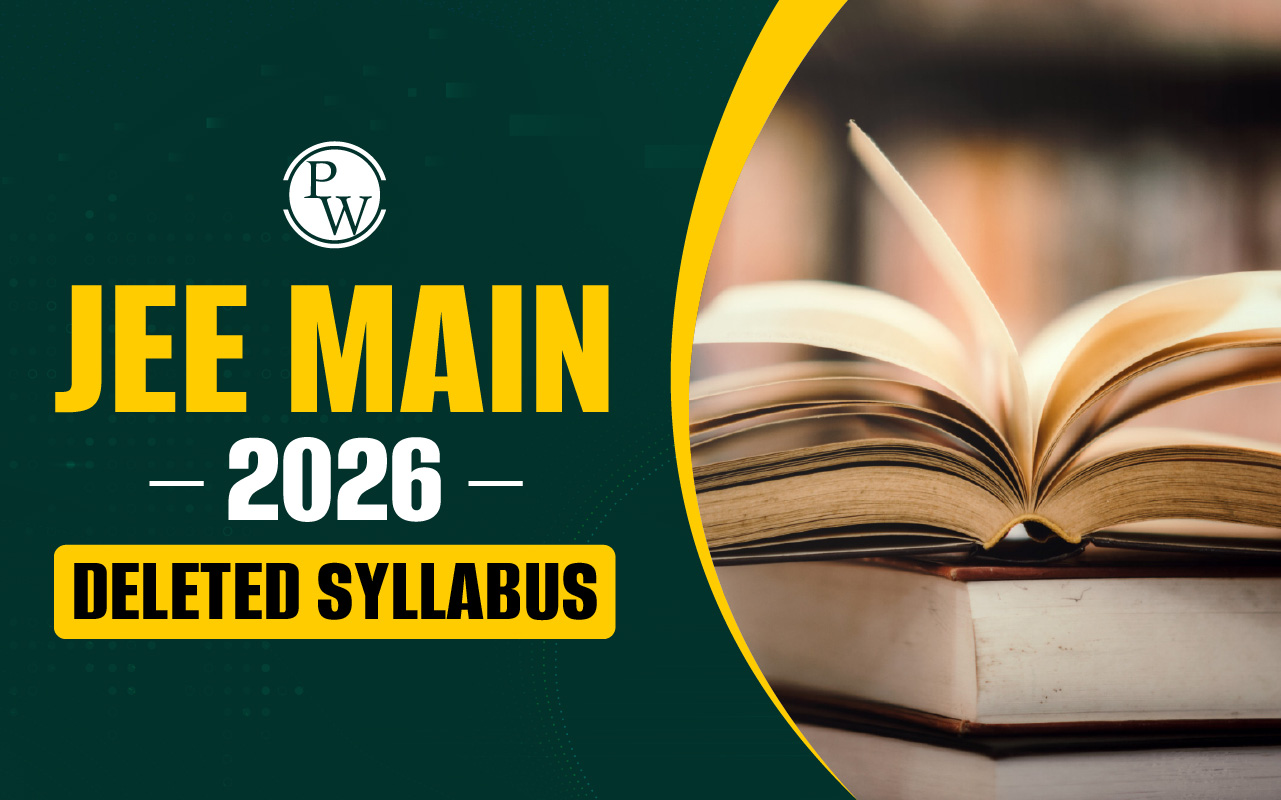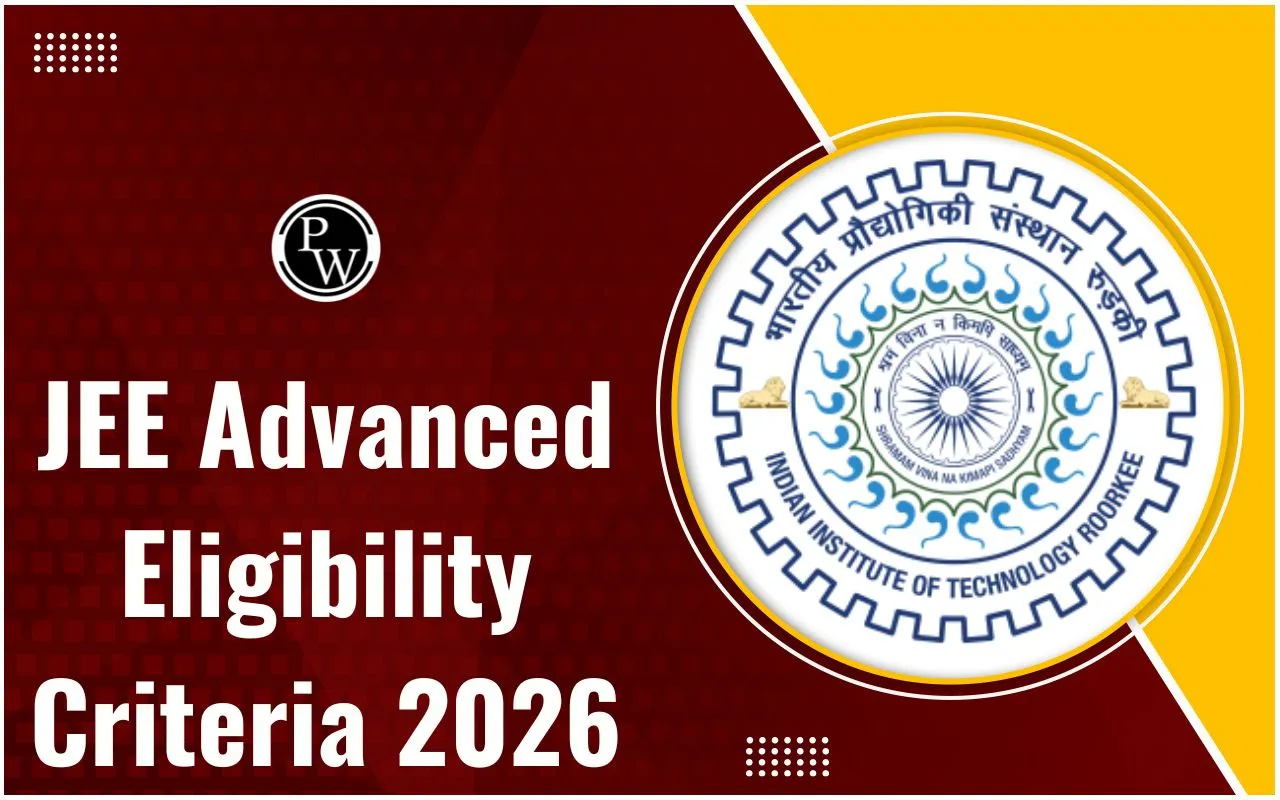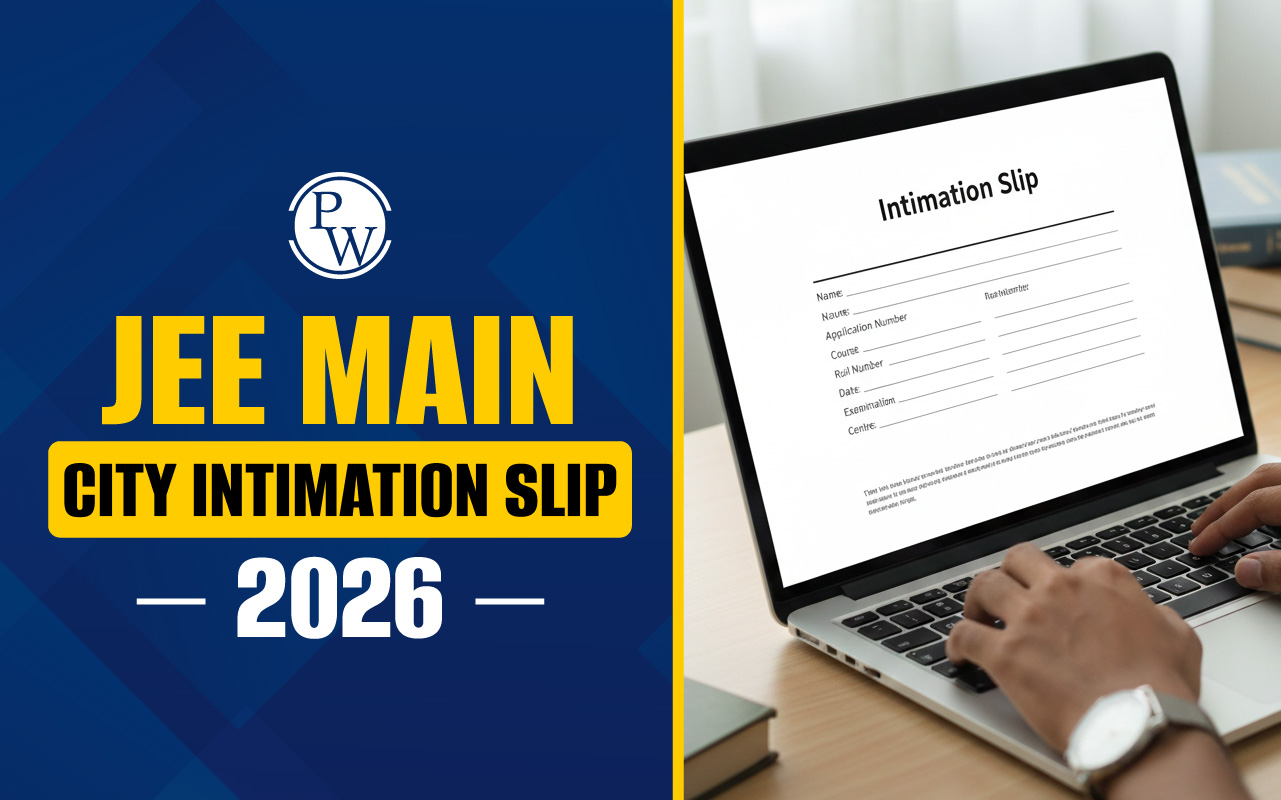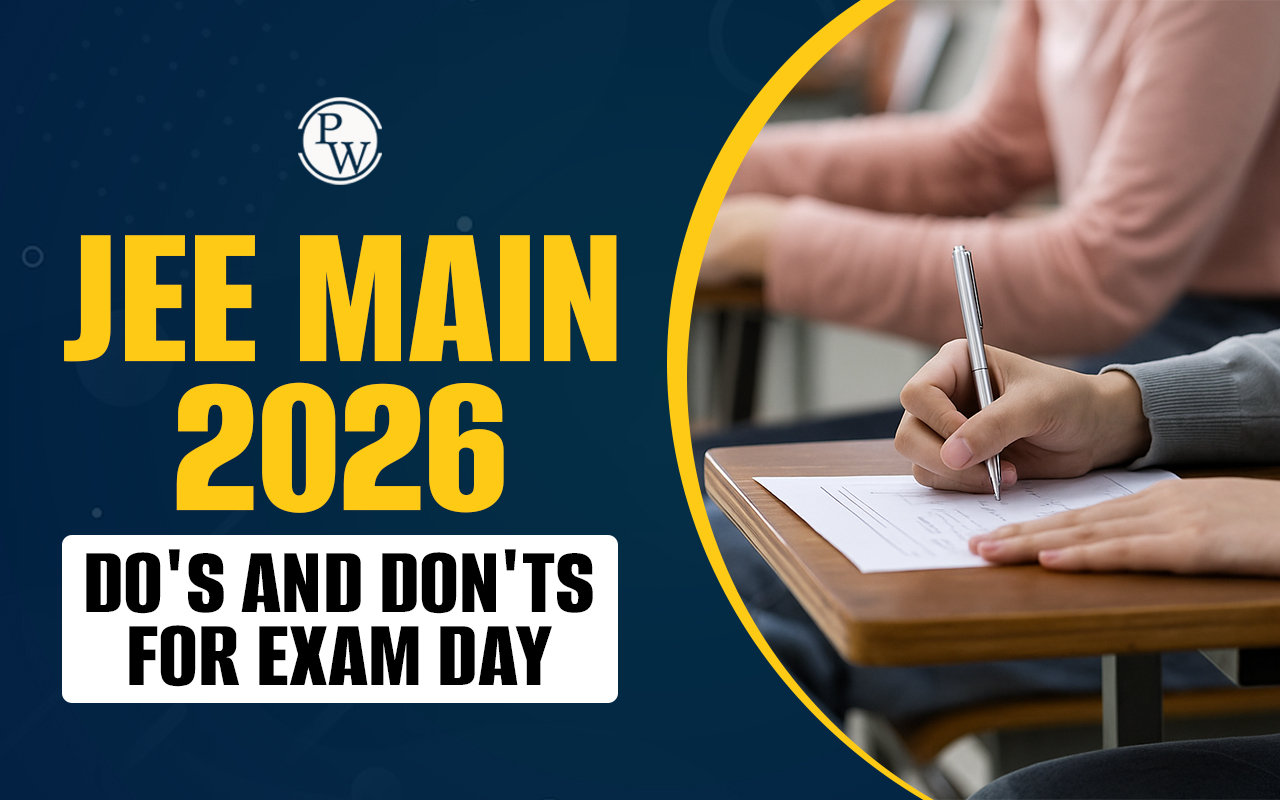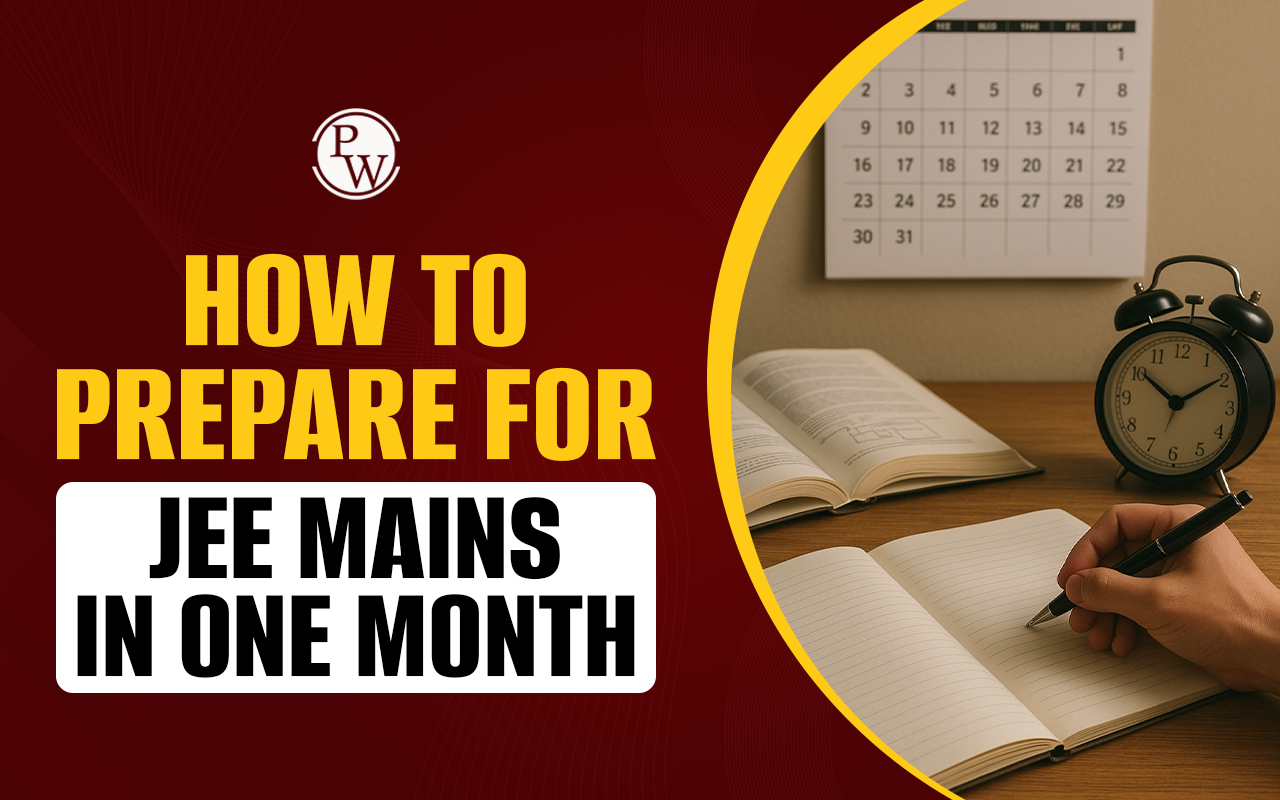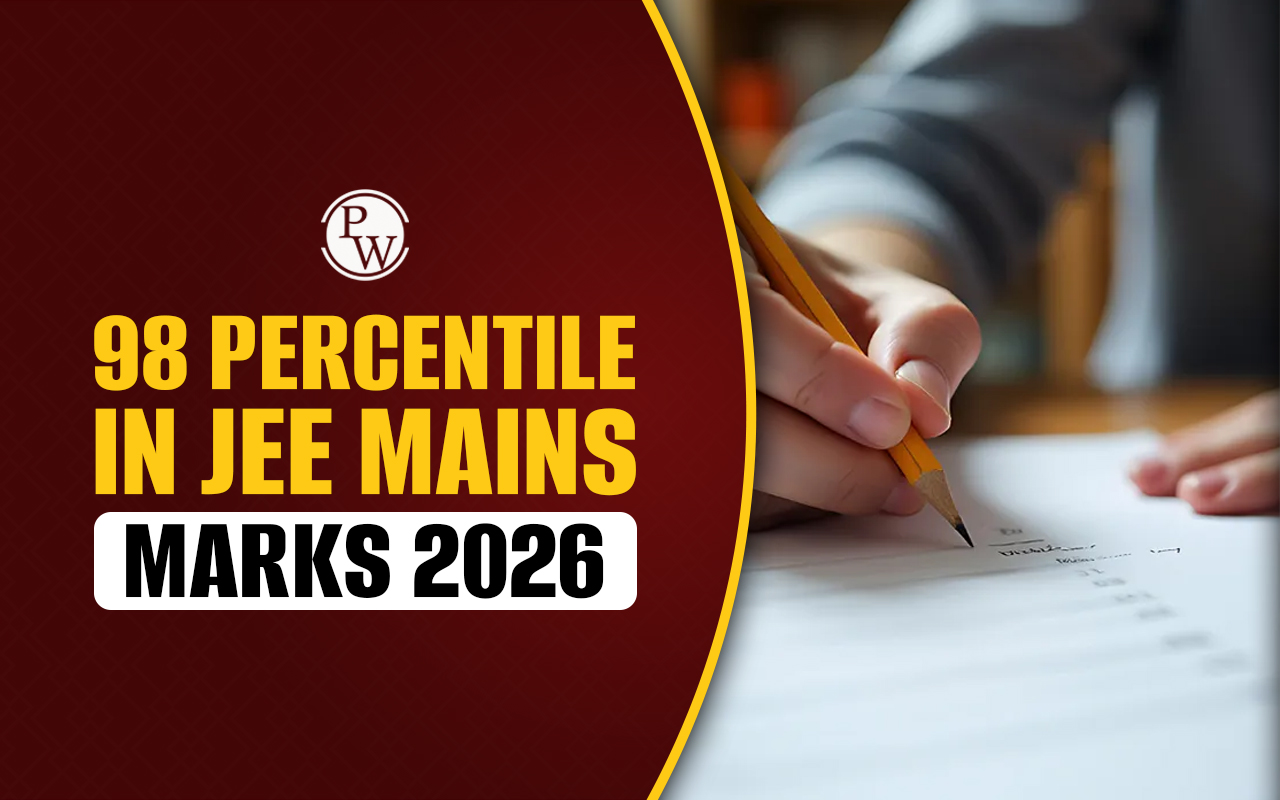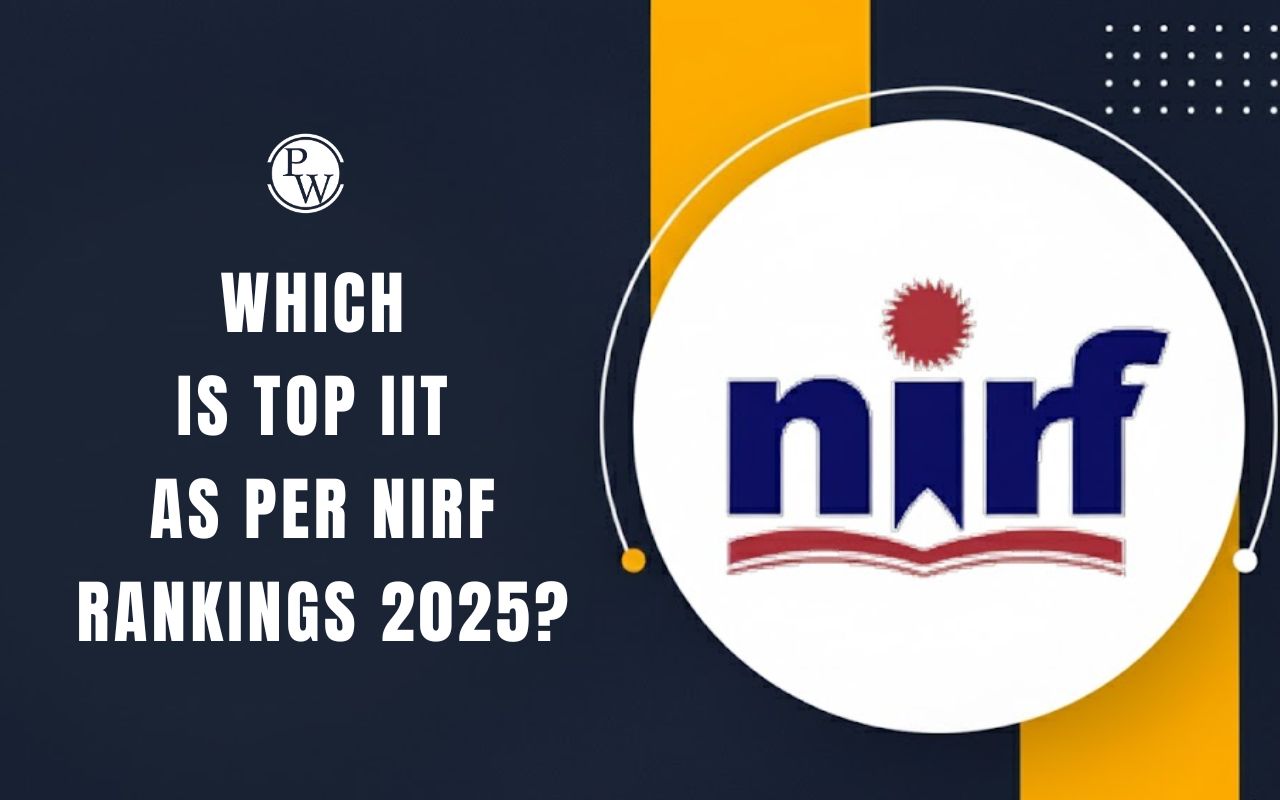
JEE Main BArch Syllabus 2024: The NTA (National Testing Agency) will publish the JEE Main 2024 syllabus for BArch on the official website jeemain.nta.nic.in 2024, along with the JEE brochure. The NTA JEE Mains BArch syllabus PDF 2024 includes topics organised by subject, covering the areas from which questions will be asked in the Joint Entrance Examination.
In addition to the JEE Main syllabus, candidates can also explore the official JEE exam pattern and refer to the previous year's JEE Main BArch question paper. To learn more about the JEE Main BArch syllabus 2024, read the complete article.JEE Main BArch Syllabus 2024 Overview
It is recommended for students preparing for the upcoming entrance exam to carefully review the JEE Main syllabus 2024 for BArch before starting their preparation. Familiarising themselves with the JEE Main BArch syllabus 2024 helps students prepare more effectively. Applicants can find crucial details and review significant highlights of the JEE Main Exam in the table provided below.| JEE Main 2024 Overview | |
| Particulars | Details |
| Name of the Examination | Joint Entrance Examination Main (JEE Main) |
| Conducting Body | National Testing Agency (NTA) |
| Level of examination | Undergraduate Exam at the National Level |
| Exam Frequency | Twice a year (January and April) |
| Exam Mode | Computed Based Test (CBT) for admissions to BE/ BTech/ BArch/ BPlan Pen and paper-based test (PBT) for Drawing section in BArch |
| Courses offered via entrance exam | BE/BTech, BArch, BPlan |
| Mode of Application | Online |
| Exam duration |
|
| Papers and Total Marks |
|
| Total Questions |
|
| Marking Scheme |
|
| Language/Medium of Exam | English, Hindi, Assamese, Bengali, Gujarati, Kannada, Marathi, Malayalam, Odia, Punjabi, Tamil, Telugu and Urdu |
| Colleges Accepting Exam Score | All NIT, IIITs, and CFTIs |
| Mode of exam | For BTech (Paper I): Physics, Chemistry, and Mathematics For BArch (Paper II): Mathematics, Aptitude and Drawing For BPlanning (Paper III): Mathematics, Aptitude, and Planning |
| Official Website | jeemain.nta.nic.in |
JEE Main BArch Exam Pattern 2024
The exam pattern for JEE Main BArch paper has been updated by the National Testing Agency. It includes different information such as the way the exam is conducted, how long it lasts, the number of questions, the marking system, and more. It is recommended for students to review the JEE Main BArch exam pattern before taking the test:- Exam Format: The JEE Main BArch paper is divided into three sections: Mathematics, General Aptitude, and Drawing. The drawing part will be in offline mode, where candidates use pen and paper. On the other hand, Mathematics and Aptitude sections will be online, using a Computer Based Test.
- Question Types: The question paper will include Multiple Choice Questions (MCQs) and Numerical Answer Type (NAT) questions.
- Scoring System: Candidates earn 4 marks for each correct answer, and there is a deduction of 1 mark for every incorrect answer.
- Exam Duration: The total duration of the exam is 3 hours.
- Total Questions: The exam comprises a total of 77 questions.
- Language Options: The exam is available in Hindi, English, and Gujarati (only for centres in Gujarat, Daman and Diu, and Dadra and Nagar Haveli).
| JEE Main BArch Exam Pattern 2024 For Paper 2A | |||||
| Subject | Section A (Marking Scheme: Correct +4, Incorrect -1, Unanswered 0) Question Type: MCQs | Section B (Marking Scheme: Correct +4, Incorrect -1, Unanswered 0) Question Type: Numerical Value | Marks | ||
| — | Number of Questions in paper | Number of questions can be attempt | Number of Questions in paper | Number of questions can be attempt | — |
| Drawing | 2 | 20 | 0 | 0 | 100 |
| Maths | 30 | 20 | 10 | 5 | 100 |
| Aptitude | 50 | 20 | 0 | 0 | 200 |
| Total | 82 (Among which a candidate can attempt 77 questions) | 400 | |||
| JEE Main BArch Exam Pattern 2024 For Paper 2B | |||||
| Subject | Section A (Marking Scheme: Correct +4, Incorrect -1, Unanswered 0) Question Type: MCQs | Section B (Marking Scheme: Correct +4, Incorrect -1, Unanswered 0) Question Type: Numerical Value | Marks | ||
| — | Number of Questions in paper | Number of questions can be attempt | Number of Questions in paper | Number of questions can be attempt | — |
| Planning Based | 25 | 20 | 0 | 0 | 100 |
| Maths | 30 | 20 | 10 | 5 | 100 |
| Aptitude | 50 | 20 | 0 | 0 | 200 |
| Total | 105 (Among which a candidate can attempt 100 questions) | 400 | |||
JEE Main BArch Syllabus 2024 General Aptitude
The Aptitude Test examines the candidate's verbal, abstract/conceptual reasoning abilities, and numerical reasoning. The JEE Main BArch section consists of two parts. Candidates can check the topics listed below to get ready for the Aptitude Test.| JEE Main BArch Syllabus 2024 General Aptitude | |
| Sections | Topic Name |
| Part 1 | Awareness of Persons, Objects, Places, Buildings, Materials, Textures related to Architecture and build-environment, Visualising different sides of three-dimensional objects, Visualising three-dimensional objects from two-dimensional drawings, Analytical Reasoning Mental Ability (Visual, Numerical and Verbal). |
| Part 2 | Three-dimensional- perception: Understanding and appreciation of scale and proportion of objects, building forms and elements, colour texture, harmony and contrast. Design and drawing of geometrical or abstract shapes and patterns in pencil, Transformation of forms in both 2 D and 3 D union, subtraction, rotation, development of surfaces and volumes, Generation of Plan, elevations and 3 D views of objects, Creating two-dimensional and three-dimensional compositions using given shapes and forms. Sketching of scenes and activities from memory of urban landscape (public space, festivals, market, street scenes, monuments, recreational spaces, etc), landscape (riverfronts, jungles, trees, plants, etc) and rural life. |
| Topic-wise Weightage of General Aptitude Section | |
| Important Topics for Aptitude | Weightage |
| Awareness of persons, places, Building, Materials | 2-3% |
| Objects, texture related to Architecture and build-environment | 2-3% |
| Visualising three-dimensional objects from two-dimensional drawings | 3-4% |
| Visualising Different sides of 3D objects | 3% |
| Mental Ability | 2% |
| Colour Texture | 1-2% |
| Analytical Reasoning | 1-2% |
| 3D- Perception and Appreciation of scale and proportion of objects | 2-3% |
JEE Main BArch Syllabus 2024 Drawing
Essentially, the Drawing Test in JEE Main Paper 2 focuses on creative design concepts. You can review the JEE Main BArch Syllabus for the Drawing section in the table below:| JEE Main BArch Syllabus 2024- Drawing | |
| Serial Number | Topic Name |
| 1 | Drawing and Designing of geometrical or abstract shapes and patterns in pencil |
| 2 | Transformation of forms both 2D and 3D union |
| 3 | Development of Surfaces and Volumes |
| 4 | Generation of Plan |
| 5 | Creating 2D and 3D compositions using given shapes and forms |
| 6 | Elevation and 3D views of objects rotation |
| 7 | Sketching of activities from memory of urban scenes |
JEE Main BArch Syllabus 2024 Mathematics
The mathematics part of the JEE Main BArch syllabus 2024 is a bit tricky and challenging. Hence, you’ll need to understand it better. We have provided the detailed BArch syllabus for mathematics in the table below:| JEE Main BArch Syllabus- Mathematics | |
| Topic | Sub-topics |
| Sets, relations and functions | Sets, roster and set builder form of sets, Types of sets, subset, the proper and improper sets, Power set, universal set, union of sets, complement of sets, De-morgan’s Law, Ordered pairs, cartesian product, Relation, number of relation, types of relation, Functions, image, and Pre-image, Types of functions, Composition of function, condition for composite function, the property of a composite function, The inverse of a function |
| Complex numbers and quadratic equations | Algebra of complex numbers, Modulus and argument of complex numbers, The complex conjugate of complex numbers and properties of complex numbers, Polar form representation and Euler form, Finding the square root of complex numbers and complex equations, De-moivre’s theorem, cube root and nth root of unity, Vector representation and rotation, The discriminant of quadratic equation, Nature of roots, the relation of coefficient and roots, Transformation of quadratic equations and condition of common roots. |
| Matrices and Determinants | Matrix and operation on matrices, Types of matrix, Transpose of a matrix, symmetric and skew-symmetric matrix, Conjugate of matrix, hermitian and skew-hermitian matrix, Determinant of matrix, Minor and cofactor of an element of matrix/determinant, Adjoint and inverse of a matrix, Elementary row operations and use in finding the inverse of a matrix, System of linear equations and Cramer’s Rule, System of homogeneous linear equations |
| Permutations and Combinations | Fundamental Principle of Counting, Permutations as an Arrangement, Combinations as Selections, P (n,r) and C (n,r), Application of Permutation and Combination. |
| Mathematical Induction | Principle of Mathematical Induction and its Simple Application, Principle of Mathematical Induction. |
| Binomial Theorem and its simple applications | Binomial Theorem for Positive Integral Index, Pascal’s Triangle, General Term, Middle Term, Properties and Application of Binomial Theorem. |
| Sequence and Series | Sequences, Arithmetic and Geometric Progression, Arithmetic and Geometric Mean, Harmonic Progression, Sum up to n terms, Arithmetic-geometric series. |
| Limit, Continuity and differentiability | Limits of a function, Properties of limits, Limits of polynomials and rational functions, Continuity of a function at a point, Discontinuity, Continuity of Composite Functions, Differentiability, Algebra of derivatives, Rolle’s Theorem, Mean Value Theorem (Lagrange). |
| Integral Calculus | Introduction, integration as the inverse function of differentiation, Indefinite integral and properties of indefinite integral, Comparison between definite and Indefinite integral, Methods of integration, Integration by substitution, Integration using trigonometric identities, integration by partial fractions, integration by parts, Integrals of some particular function, Integrals of some special types, Definite integral and its properties, The fundamental theorem of calculus, Evaluations of definite integral by substitution. |
| Differential equations | Order and Degree of a Differential equation, General and Particular solution, Formation of differential equations, Methods of solving different types of differential equations. |
| Coordinate Geometry | Directrix, Latus Rectum, Slope and gradient, Focus and Eccentricity, Angle between two intersecting lines, their intersection points, parallel lines and collinear lines are the important terms of Coordinate Geometry. |
| Three dimensional Geometry | Coordinate of a point in space, distance formula, Direction cosine and Direction ratio, The angle between two intersecting lines, Skew lines and the shortest distance between two lines, Equation of line and plane, The intersection of line and plane. |
| Vector Algebra | Vector (Position Vector, Direction cosine), Types of vector, Vector Algebra, Detection Formula, Product of two vectors (Scalar and Vector product). |
| Statistics and Probability | Independent Events, Dependent Events, Conditional probability, Random variables, etc. |
| Trigonometry | Trigonometry Function and their Identities, Trigonometry Equation, Inverse Trigonometry. |
| Mathematical Reasoning | Statements and types of statements, Basic logical connectives, conjunction, and disjunction, Negation, Conditional statements, The Contrapositive of conditional statements, the converse of conditional statements, Biconditional statements, Quantifiers, Validity of statements. |
JEE Main BArch Syllabus 2024 Exam Schedule
JEE Main BArch exam schedule has been released officially. The JEE Main BArch paper 2024 will be conducted over two shifts. Check the table below for more details:| JEE Main 2024 BArch Exam Schedule | ||
| Shifts | Exam Start (tentative) | Exam End (tentative) |
| Shift 1 | 9:30 AM | 12:30 PM |
| Shift 2 | 2:30 PM | 5:30 PM |
JEE Main BArch Syllabus 2024 Paper Analysis
We need to check the paper from the previous year to understand how this year's paper might appear.- According to JEE Aspirants and experts, the JEE Main BArch 2024 paper was of medium difficulty.
- The paper had three parts: Mathematics, General Aptitude, and Drawing. The test lasted three hours, with each part having 60 minutes.
- Mathematics had 25 questions, while Aptitude and Drawing had 50 and 2 questions respectively.
- Many aspirants found Mathematics more challenging than the other parts, saying the questions were tricky.
- The General Aptitude section had questions about explaining 3D images, viewing a building from the top, and matching options.
- It included questions on mental ability and some related to theories.
- In the Drawing section, candidates had to draw a gymnast and use cylinders for composition.
JEE Main BArch Syllabus 2024 Scheme of Exam
Applicants may review the subject combinations for the JEE Main 2024 BArch exam, the types of questions in each paper, and the mode of examination in the table provided below:| JEE Main BArch 2024 - Scheme of Exam | ||
| Subject | Type of Questions | Mode of Examination |
| Part 1 - Mathematics | Objective Type - Multiple Choice Questions (MCQs) & Questions for which answer is a numerical value | Computer Based Test (CBT) mode only |
| Part 2 - Aptitude Test | Objective Type - Multiple Choice Questions (MCQs | Computer Based Test (CBT) mode only |
| Part 3 - Drawing | Questions to test drawing aptitude | Pen & Paper Based” (offline) mode to be attempted on drawing sheet |
JEE Main BArch 2024 Recommended Books
If you’re preparing for JEE Mains BArch, then there are certain books that can help you a lot in your JEE Mains preparations. Here are some recommended books for JEE Mains B Arch:| JEE Main BArch 2024 Recommended Books | |
| Books | Author/Publisher |
| A Complete Self-Guide for BArch Entrance Examination | P.K. Mishra (Arihant) |
| Verbal and Non-verbal Reasoning Book | R.S. Aggarwal |
| Complete Architecture Entrance Guide | Ashok Goel and Arjun Kamal |
| BArch/NATA/JEE Main- Offline Drawing Test | Nimish Madan |
| Mathematics XI & XII | R.S. Agarwal |
| Elementary Mathematics | DoroFeev, Potapov |
| Higher Algebra | Hall & Knight |
How to Crack JEE Main BArch Paper?
The competition for the JEE Main BArch Paper is quite challenging in India, demanding considerable effort to get ready for it. Every year, a large number of students take the entrance exam. In addition to hard work, smart preparation is also necessary. That's why it's crucial to grasp tips and tricks that can definitely boost your speed and accuracy in the paper. Here are some tips to assist you in the JEE entrance exam.- Create an effective study plan: Many times, students spend a lot of time planning their studies but struggle to follow through. Executing the study plan is crucial for achieving the expected results. Planning doesn't just involve making a timetable; it should be a practical plan that you can actually implement. If you lack motivation for what you're planning, it's likely to be ineffective.
- Evaluate your strengths and weaknesses: When you begin your preparation, identify your strengths and weaknesses. This allows you to focus on improving your weak areas while capitalising on your strengths. Utilising your full potential increases your chances of achieving higher ranks in the exam.
- Practise previous year question papers/sample papers: Thorough practice is always recommended. Examiners may present questions in a tricky manner to confuse students. Developing the ability to see through these tricks and understanding the questions clearly is essential.
- Plan your exam approach: Before taking the JEE Main BArch Paper, plan how you will approach the exam. Since you don't have to follow the numbered order of questions, strategically choose the questions you are confident about. Avoid wasting time on difficult questions initially; instead, prioritise the ones you can solve easily.
- Maintain a positive attitude and a balanced mindset: It's crucial for JEE Main architecture aspirants to have a healthy mindset before the exam. A clear mindset helps you concentrate and approach questions with positivity. Even if you encounter challenging questions, maintaining balance prevents negative effects and helps you stay focused.
JEE Main BArch Syllabus 2024 FAQs
Q.1: How can I stay updated on any changes in the JEE Main BArch exam pattern?
Ans. Regularly check the official JEE website, subscribe to notifications, and stay connected with reliable educational news sources for the latest updates.
Q.2: Are there any specific tips for improving speed in solving mathematical problems?
Ans. Practice time-bound problem-solving regularly, identify patterns in questions, and adopt efficient calculation techniques to enhance your speed in the Mathematics section.
Q.3: Is it necessary to join a test series for JEE Main BArch preparation?
Ans. While not mandatory, joining a test series provides real exam experience, identifies weak areas, and helps in refining your strategy for the actual exam.
Q.4: Can I use a rough sheet for calculations during the JEE Main BArch exam?
Ans. Yes, rough sheets will be provided at the exam centre for calculations and rough work. Utilise them wisely to organise your thoughts and calculations.
Q.5: How should I approach the Drawing Test in JEE Main BArch if I lack artistic skills?
Ans. Focus on improving basic drawing techniques, emphasise clarity, and practise geometric shapes and perspectives to enhance your skills for the Drawing Test.
Talk to a counsellorHave doubts? Our support team will be happy to assist you!

Check out these Related Articles
Free Learning Resources
PW Books
Notes (Class 10-12)
PW Study Materials
Notes (Class 6-9)
Ncert Solutions
Govt Exams
Class 6th to 12th Online Courses
Govt Job Exams Courses
UPSC Coaching
Defence Exam Coaching
Gate Exam Coaching
Other Exams
Know about Physics Wallah
Physics Wallah is an Indian edtech platform that provides accessible & comprehensive learning experiences to students from Class 6th to postgraduate level. We also provide extensive NCERT solutions, sample paper, NEET, JEE Mains, BITSAT previous year papers & more such resources to students. Physics Wallah also caters to over 3.5 million registered students and over 78 lakh+ Youtube subscribers with 4.8 rating on its app.
We Stand Out because
We provide students with intensive courses with India’s qualified & experienced faculties & mentors. PW strives to make the learning experience comprehensive and accessible for students of all sections of society. We believe in empowering every single student who couldn't dream of a good career in engineering and medical field earlier.
Our Key Focus Areas
Physics Wallah's main focus is to make the learning experience as economical as possible for all students. With our affordable courses like Lakshya, Udaan and Arjuna and many others, we have been able to provide a platform for lakhs of aspirants. From providing Chemistry, Maths, Physics formula to giving e-books of eminent authors like RD Sharma, RS Aggarwal and Lakhmir Singh, PW focuses on every single student's need for preparation.
What Makes Us Different
Physics Wallah strives to develop a comprehensive pedagogical structure for students, where they get a state-of-the-art learning experience with study material and resources. Apart from catering students preparing for JEE Mains and NEET, PW also provides study material for each state board like Uttar Pradesh, Bihar, and others
Copyright © 2025 Physicswallah Limited All rights reserved.
Get App
